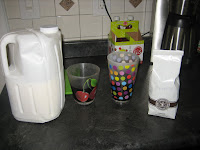Soaring Heights and Economic Concerns
In a recent issue of Good (Oct 16-22), Starbucks addressed the issue of the economy. The subtitle “booms, busts, and everything in between” aptly captures the gamut of terms and concepts that comprise economic understanding. There were many interesting definitions and facts cited. A few, in particular, stood out for me:
At the moment, the intensity of economic news is counterbalancing the surge of joy around the recent election. Despite the economy, Starbucks continues to be a destination. During the tediously long, and equally enthralling election cycle, Starbucks kept us cozy and caffeinated, while encouraging us to VOTE. Then it made good on its promise to give voters a tall cup of coffee based solely on their announcement of having voted.
Overall, the demand for coffee is relatively inelastic….Americans are spending about $18 billion a year on coffee (according to the National Coffee Association) with the average consumer spending about $165 a year, though many, many people exceed that and spend hundreds, if not $1,000+ on coffee.
A friend recently sent me an article that provided yet another angle on the while coffee/economy connection. Apparently, in Colombia, home of “Juan Valdez” coffee, when demand for coffee declines, resulting in price dips, children fare better. Colombia is a huge coffee producer, responsible for 12% of the world’s coffee. In fact, coffee contributes 3.7% of Colombia’s national income. Yet, when coffee prices decrease, there is more time to care for children and attend to health-related needs--so young children benefit. According to Grant Miller and B. Piedad Urdinola, authors of “Time Vs. Money in Child Health Production: The Case of Coffee Price Fluctuations and Child Survival in Colombia,” the extra time allows parents to deal with five, critical time-consuming needs:
It would seem that this idea might turn the fair trade coffee issue on its head. But not really. True--- Starbucks bought more than 12 million pounds of Fair Trade coffee at above-market prices, which would seem to support the economic incentive to work in lieu of huge investments in the well-being of children. But Starbucks’ commitment to building schools, health clinics, coffee mills, and other projects in coffee-producing places likeColombia
Coffee is such a valuable, life-giving resource that its sale generates enough energy and surplus capital to make sure that the children of Colombia are getting a better shot.
Making sure everyone gets a shot
Seems to me that this is the new prevailing ethos! When you can, take time to protect your health and the health of those you love…and to sit down for a good read and a good cup of coffee.
Please look forward to upcoming coverage of “The House at Sugar Beach by Helene Cooper---currently available at Starbucks.
- The very first Internet trade was in 1994
- In 1999, the Dow hit 11,000
- In October 2007 (just over a year ago), the Dow hit 14,164
- The national budget is financed by taxes and fees for public services
- From 1845 to 1945, the typical boom or bust lasted 21 months. Since World War II, expansions have averaged 50 months and contractions have averaged 11 months.
At the moment, the intensity of economic news is counterbalancing the surge of joy around the recent election. Despite the economy, Starbucks continues to be a destination. During the tediously long, and equally enthralling election cycle, Starbucks kept us cozy and caffeinated, while encouraging us to VOTE. Then it made good on its promise to give voters a tall cup of coffee based solely on their announcement of having voted.
Overall, the demand for coffee is relatively inelastic….Americans are spending about $18 billion a year on coffee (according to the National Coffee Association) with the average consumer spending about $165 a year, though many, many people exceed that and spend hundreds, if not $1,000+ on coffee.
A friend recently sent me an article that provided yet another angle on the while coffee/economy connection. Apparently, in Colombia, home of “Juan Valdez” coffee, when demand for coffee declines, resulting in price dips, children fare better. Colombia is a huge coffee producer, responsible for 12% of the world’s coffee. In fact, coffee contributes 3.7% of Colombia’s national income. Yet, when coffee prices decrease, there is more time to care for children and attend to health-related needs--so young children benefit. According to Grant Miller and B. Piedad Urdinola, authors of “Time Vs. Money in Child Health Production: The Case of Coffee Price Fluctuations and Child Survival in Colombia,” the extra time allows parents to deal with five, critical time-consuming needs:
- Bring pure water from distant sources
- Breastfeed
- Forage for cleaner household fuels
- Practice good hygienic practices
- Travel to distant health facilities for highly beneficial vaccines and other health services
It would seem that this idea might turn the fair trade coffee issue on its head. But not really. True--- Starbucks bought more than 12 million pounds of Fair Trade coffee at above-market prices, which would seem to support the economic incentive to work in lieu of huge investments in the well-being of children. But Starbucks’ commitment to building schools, health clinics, coffee mills, and other projects in coffee-producing places like
Coffee is such a valuable, life-giving resource that its sale generates enough energy and surplus capital to make sure that the children of Colombia are getting a better shot.
Making sure everyone gets a shot
Seems to me that this is the new prevailing ethos! When you can, take time to protect your health and the health of those you love…and to sit down for a good read and a good cup of coffee.
Please look forward to upcoming coverage of “The House at Sugar Beach by Helene Cooper---currently available at Starbucks.


Comments